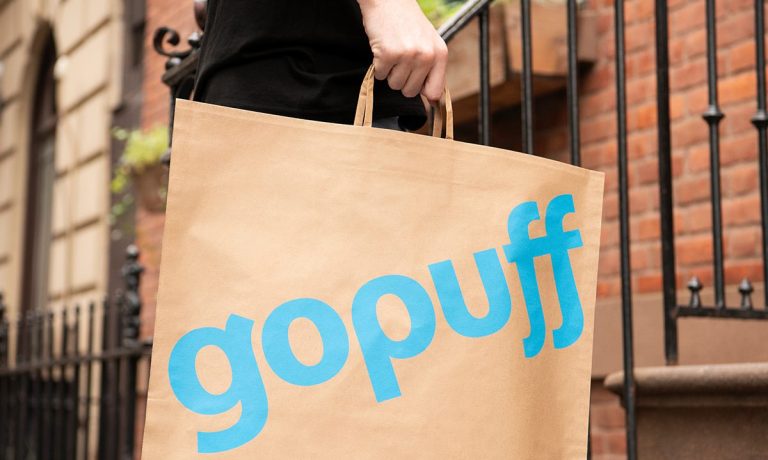
As economic pressures rack the on-demand delivery industry, Gopuff has undergone another round of layoffs.
The convenience retail delivery service cut around 2% of its workforce, a Gopuff spokesperson confirmed via email, in an effort to improve performance. The move, first reported by Bloomberg, affected more than 100 employees and marks the third round of major layoffs in the last year. The move follows the company letting go of 250 employees in the fall and 1,500 over the summer.
It seems global macroeconomic headwinds are hitting the industry hard, as one month earlier, United Kingdom-based on-demand delivery service Deliveroo announced that it was laying off 9% of its workforce. The company’s CEO and founder Will Shu stated that approximately 350 roles would be affected, though the aggregator expects the final tally to be closer to 300 once redeployments are accounted for.
“In recent years we grew our headcount very quickly. This was a response to unprecedented growth rates supported by COVID-related tailwinds,” Shu said at the time. “We now face serious and unforeseen economic headwinds.”
Certainly, consumers’ behavior has been changing, with many shoppers no longer willing to pay the premium for on-demand delivery. Take, for instance, the restaurant industry, where rising prices are prompting many consumers to choose pickup instead. Research from PYMNTS’ February study “Connected Dining: Rising Costs Push Consumers Toward Pickup,” which draws from a census-balanced survey of more than 2,100 U.S. consumers in January, about half of all restaurant customers (48%) report being more likely to order pickup than delivery because of inflation.
Fifty-eight percent of those surveyed stated that a key motivation for choosing pickup is a desire skip the delivery fee, and 42% reported picking up their meals because not having to tip a delivery person is important to them.
Moreover, many consumers are looking to cut back on their spending altogether. Research from the latest edition of PYMNTS’ Consumer Inflation Sentiment study, “Consumer Inflation Sentiment: The False Appeal of Deal-Chasing Consumers,” for which we surveyed more than 2,100 U.S. consumers, finds that three-quarters have cut back on nonessential retail purchases. Moreover, 72% stated that prices and discounts influenced their decision of where to make their most recent retail purchase.
With this pressure on the on-demand delivery industry, major players are doing everything in their power to keep costs lower for consumers, but with the impact that these efforts can have on profit margins, they may not be enough.
“On the affordability side, … we’ve taken down transaction costs for consumers by about 8% in the past year, and we’re always trying to drive this down,” DoorDash CEO Tony Xu told analysts on a call last month.
Matters likely will not get any better for on-demand delivery services any time soon, according to data from PYMNTS’ study “New Reality Check: The Paycheck-to-Paycheck Report – The Economic Outlook and Sentiment Edition,” which drew from a survey of nearly 4,000 U.S. consumers.
The study found that consumers expect high inflation to continue eating away at their paychecks and purchasing power for at least the next two years and beyond, as macroeconomic headwinds continue to drive widespread pessimism and dampen consumers’ outlook around the ability to meet their financial goals.